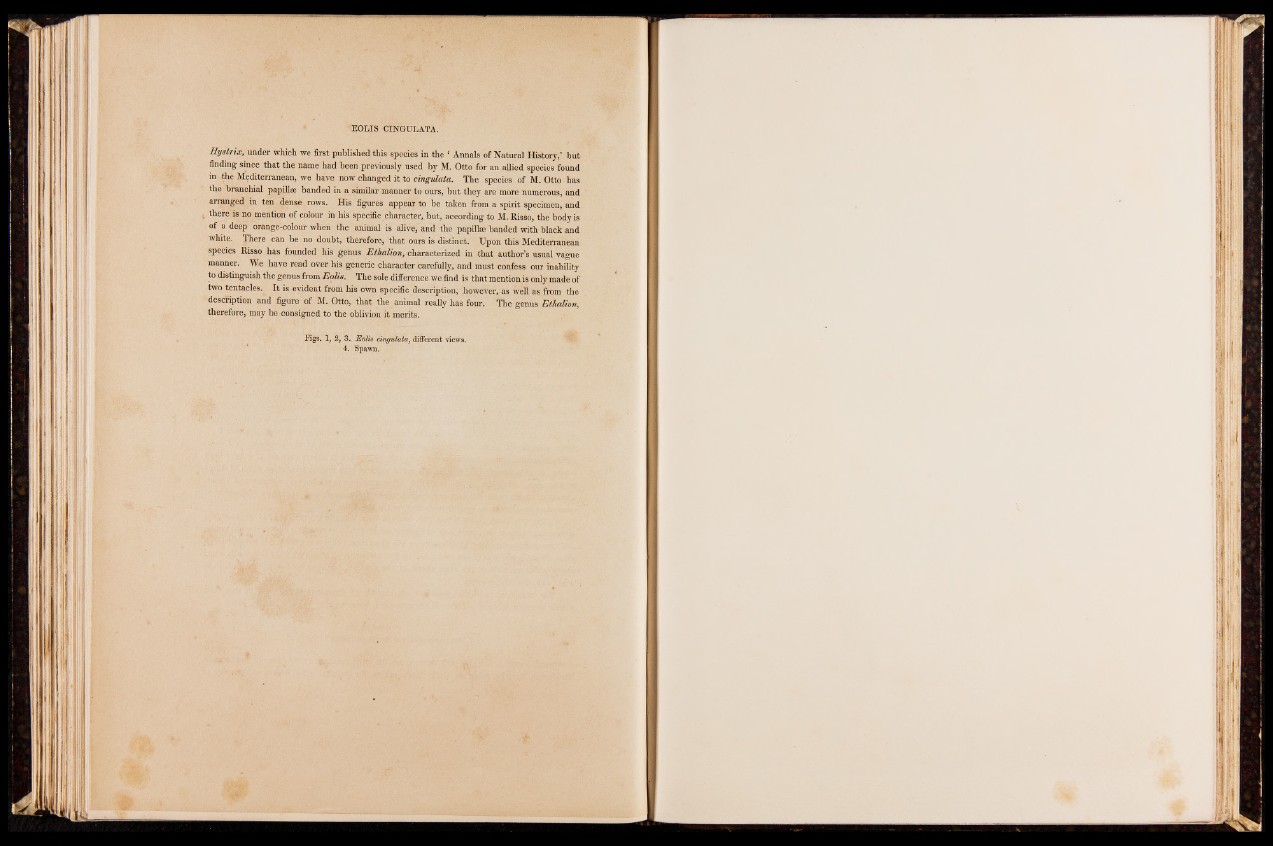
Hystrix, under which we first published this species in the ‘ Annals of Natural History,’ but
finding since that the name had been previously used by M. Otto for an allied species found
in the Mediterranean, we have now changed it to cingulata. The species of M. Otto has
the branchial papillae banded in a similar manner to ours, but they are more numerous, and
arranged in ten dense rows. His figures appear to be taken from a spirit specimen, and
there is no mention of colour in his specific character, but, according to M. Risso, the body is
of a deep orange-colour when the animal is alive, and the papillse banded with black and
white. There can be no doubt, therefore, that ours is distinct. Upon this Mediterranean
species Risso has founded his genus Ethation, characterized in that author’s usual vague
manner. We have read over his generic character carefully, and must confess our inability
to distinguish the genus from Eolis. , The sole difference we find is that mention is only made of
two tentacles. It is evident from his own specific description, however, as well as. from the
description and figure of M. Otto, that the animal really has four. The genus Ethalion,
therefore, may be consigned to the oblivion it merits.
Figs. 1, 2, 3.. Eolis cingulata, different views.
—